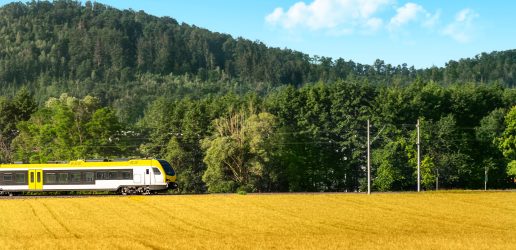New research to understand the existing provision of public access to woodlands in England, as well as opportunities for increasing access, has been published by Forest Research. Funded through Defra’s Nature for Climate Fund, the study updates 10-year-old data on public access to trees and woodlands and provides maps showing the distribution of accessible woodlands.

Access to woodlands can provide a wide range of health and wellbeing benefits. A recent study found that the annual mental health benefits associated with visits to woodlands in Britain was estimated at £185 million. With inflation, this has been updated to £213 million of which £162 million is the value for England. Physical health benefits of visits to woodlands have also been identified, along with a wide range of other benefits highly valued by the public.
Darren Moseley, Head of Land Use and Ecosystem Services at Forest Research said, “The research was conducted to help understand the existing quantity of public access to woodlands in England, the proportion of people who have access to woodland in walking distance and how this varies geographically.
Understanding the distribution of publicly accessible woodlands can highlight opportunities for new woodland creation within walking distance of residential areas.
“As part of the project, we examined where accessible woodlands are and how this relates to different population groups. Understanding the distribution of publicly accessible woodlands can highlight opportunities for new woodland creation within walking distance of residential areas.”
Findings show:
The ‘Access to woodland in England’ report is available now. This publication complements the ‘Access to green space in England’ official statistic in development which calculated the distance to publicly accessible green space for every household in England measured along a network of walkable streets and paths.
To learn more about the research and see the distribution of accessible woodlands, view the ‘Public access to woodlands in England’ StoryMap.
This research is part of a wider project Understanding, Enabling, and Supporting Public Access to Woodlands led by Forest Research.
Defra’s Woodland Creation Partner grants are flexible and include access considerations as part of the initial discussions. As part of the England Woodland Creation Offer (EWCO), woodland owners and land managers can receive up to £3,700 per hectare to provide access to woodlands for the public to enjoy, and up to £600 per hectare for creating woodlands close to where people live. These are part of EWCO’s ‘additional contributions’ which are optional one-off payments and available where the woodland’s location and design deliver public benefits.

New research recommends a joined-up European network to monitor forests.
Forest Research, alongside the University of York, Fera Science and The Tree Council, have developed a practical, new, robust resource to help local authorities effectively measure the social and cultural values of trees in their area.

New research to understand the existing provision of public access to woodlands in England, as well as opportunities for increasing access, has been published by Forest Research.

New research recommends a joined-up European network to monitor forests.
Forest Research, alongside the University of York, Fera Science and The Tree Council, have developed a practical, new, robust resource to help local authorities effectively measure the social and cultural values of trees in their area.

New research to understand the existing provision of public access to woodlands in England, as well as opportunities for increasing access, has been published by Forest Research.